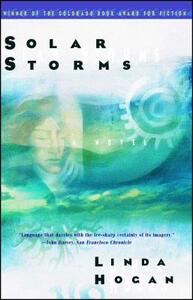Take a photo of a barcode or cover
n8hanson's Reviews (479)
Two stars for Marx, four for the introduction by A.J.P. Taylor (1967). As Taylor puts it, a product of its time. A passionate work of religious fanaticism at its finest, there is truth and fantasy on every page. Critiques of communism are easy, boring, and done to death, but here's one I found worth quoting:
"Christianity, it is said, brought hope and consolation to the slaves of the Roman Empire. Marxism did much the same for the wage slaves of capitalism and indeed went one better. They did not need to wait for the next world. The Communist Manifesto assured them that they would win this one."
I'd hoped to gain a better understanding of Marxism from this, but instead I only found a strident, sloppy screed that had far more critiques of the bourgeoisie and competing theories than explanations of what communism even is. Hopefully Das Kapital will provide more piercing philosophical insight into problems like commodification, that so far have been limited to pseudophilosophical midnight bullshit sessions.
Some quotes did sound nice, even if I've heard them before less eloquently:
"[The bourgeoisie] has pitilessly torn asunder the motley feudal ties that bound man to his 'natural superiors', and has left remaining no other nexus between man and man than naked self-interest, than callous 'cash payment'...It has resolved personal worth into exchange value, and in place of the numberless indefeasible chartered freedoms, has set up that single, unconscionable freedom - Free Trade. In one word, for exploitation, veiled by religious and political illusions, it has substituted naked, shameless, direct, brutal exploitation."
"Constant revolutionizing of production, uninterrupted disturbance of all social conditions, everlasting uncertainty and agitation distinguish the bourgeois epoch from earlier ones. All fixed, fast-frozen relations, with their train of ancient and venerable prejudices and opinions are swept away, all new-formed ones become antiquated before they can ossify. All that is solid melts into air, all that is holy is profane, and man is at last compelled to face with sober senses, his real conditions of life, and his relations with his kind."
"Christianity, it is said, brought hope and consolation to the slaves of the Roman Empire. Marxism did much the same for the wage slaves of capitalism and indeed went one better. They did not need to wait for the next world. The Communist Manifesto assured them that they would win this one."
I'd hoped to gain a better understanding of Marxism from this, but instead I only found a strident, sloppy screed that had far more critiques of the bourgeoisie and competing theories than explanations of what communism even is. Hopefully Das Kapital will provide more piercing philosophical insight into problems like commodification, that so far have been limited to pseudophilosophical midnight bullshit sessions.
Some quotes did sound nice, even if I've heard them before less eloquently:
"[The bourgeoisie] has pitilessly torn asunder the motley feudal ties that bound man to his 'natural superiors', and has left remaining no other nexus between man and man than naked self-interest, than callous 'cash payment'...It has resolved personal worth into exchange value, and in place of the numberless indefeasible chartered freedoms, has set up that single, unconscionable freedom - Free Trade. In one word, for exploitation, veiled by religious and political illusions, it has substituted naked, shameless, direct, brutal exploitation."
"Constant revolutionizing of production, uninterrupted disturbance of all social conditions, everlasting uncertainty and agitation distinguish the bourgeois epoch from earlier ones. All fixed, fast-frozen relations, with their train of ancient and venerable prejudices and opinions are swept away, all new-formed ones become antiquated before they can ossify. All that is solid melts into air, all that is holy is profane, and man is at last compelled to face with sober senses, his real conditions of life, and his relations with his kind."
Ostensibly intended for the layman, this book spends remarkably little effort on practical matters. Instead, novice-relevant advice is sandwiched between obscure, poorly translated metaphysics and fantastical legends, all presented in an incoherent manner. This is a shame, because these faults terribly obfuscate the clear practicality and clarity of Vipassana in practice. Valuable wisdom is often garbled by ornamental claptrap.
Some particularly irksome examples:
"Visuddhi Magga [presumably some meditation technique never explained], however, includes... [mindfulness] in the concentration subjects and so we will call it such here. Then there are the four divine states: love, pity, sympathetic joy and equanimity, and the formless states leading to formless jhanas...When you meditate on the four elements inside your body, it is called the analysis of the four elements." (p. 7)
This is just on the first page of instruction following the preface. No prior explanation of what any of those mean, or an overview of the means and ends of meditation, sheesh! If I was a total novice this claims to be intended for, I would be despairing already.
"The monks in those days were perfect in higher knowledge and had acquired supernatural powers. They could travel to the deva worlds or look towards them with their deva-sight or listen to them with their deva-hearing. But today...we cannot even see those devas in this world of men, such as guardians of trees and guardians of treasures." (p. 84-85)
This is in a chapter of encouragement for the novice practitioner, part of a fable about some Venerable Moggalana interviewing the goddess Uposatha about how she was reborn as a goddess after life as a Buddhist monk. Doubtful myths like these encourage the reader to practice Vipassana so s/he can be reborn as a god/dess, or develop supernatural sense...ugh. Not only does this foolishly emphasize right karma for the wrong reasons, but those wasted pages could be spent much more valuably by emphasizing specific obstacles and rewards from practice.
A last one, just to emphasize my point about obscure metaphysics:
"...the ariyan dhamma consists of the four establishments of mindfulness, four supreme efforts, four means of accomplishment, five faculties, five powers, seven factors of enlightenment and eight path-constituents - the parts of Enlightenment." (p. 91)
Wow...the Sears catalog of Buddhism, I see.
All in all, a waste of reading. Nuggets of wisdom buried in piles of ornate edifices of scripture. Just like any other organized religion, I suppose.
Some particularly irksome examples:
"Visuddhi Magga [presumably some meditation technique never explained], however, includes... [mindfulness] in the concentration subjects and so we will call it such here. Then there are the four divine states: love, pity, sympathetic joy and equanimity, and the formless states leading to formless jhanas...When you meditate on the four elements inside your body, it is called the analysis of the four elements." (p. 7)
This is just on the first page of instruction following the preface. No prior explanation of what any of those mean, or an overview of the means and ends of meditation, sheesh! If I was a total novice this claims to be intended for, I would be despairing already.
"The monks in those days were perfect in higher knowledge and had acquired supernatural powers. They could travel to the deva worlds or look towards them with their deva-sight or listen to them with their deva-hearing. But today...we cannot even see those devas in this world of men, such as guardians of trees and guardians of treasures." (p. 84-85)
This is in a chapter of encouragement for the novice practitioner, part of a fable about some Venerable Moggalana interviewing the goddess Uposatha about how she was reborn as a goddess after life as a Buddhist monk. Doubtful myths like these encourage the reader to practice Vipassana so s/he can be reborn as a god/dess, or develop supernatural sense...ugh. Not only does this foolishly emphasize right karma for the wrong reasons, but those wasted pages could be spent much more valuably by emphasizing specific obstacles and rewards from practice.
A last one, just to emphasize my point about obscure metaphysics:
"...the ariyan dhamma consists of the four establishments of mindfulness, four supreme efforts, four means of accomplishment, five faculties, five powers, seven factors of enlightenment and eight path-constituents - the parts of Enlightenment." (p. 91)
Wow...the Sears catalog of Buddhism, I see.
All in all, a waste of reading. Nuggets of wisdom buried in piles of ornate edifices of scripture. Just like any other organized religion, I suppose.









